Off-Page SEO Checklist for Higher Rankings
Off-page SEO is a fundamental aspect of a robust search engine optimization strategy. Unlike on-page SEO, which focuses on optimizing elements within your website, off-page SEO encompasses activities conducted outside your website to improve its visibility, authority, and ranking on search engines. By leveraging off-page SEO effectively, you can enhance your site’s credibility, attract more traffic, and build a strong online presence.
In this guide, we’ll delve into the essentials of off-page SEO and provide a comprehensive checklist designed to help you achieve higher rankings. Drawing from the principles of Semantic/Holistic SEO by Koray Tuğberk GÜBÜR, we emphasize the importance of context, relevance, and quality in all off-page activities. This approach ensures sustainable growth and meaningful engagement with your audience.
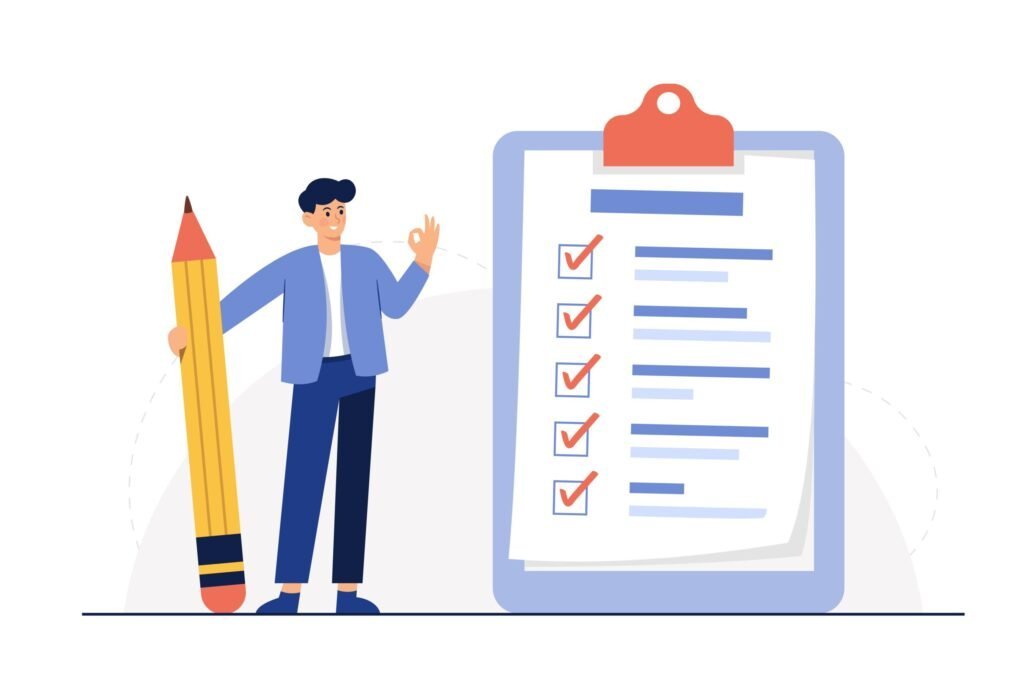
Comprehensive Off-Page SEO Checklist
- Quality Backlinks: Backlinks are one of the most influential ranking factors. High-quality backlinks from reputable websites signal to search engines that your content is valuable and trustworthy.
- Social Media Engagement: Social media platforms can drive significant traffic to your website and enhance your brand’s visibility.
- Influencer Outreach: Influencers have a loyal following and can help amplify your message to a broader audience.
- Content Marketing: Creating high-quality, shareable content can naturally attract backlinks and social shares.
- Forum Participation: Engaging in forums related to your niche helps in establishing authority and driving traffic.
- Local SEO and Citations: For businesses targeting local customers, local SEO and citations are crucial for visibility in local search results.
- Press Releases and PR Campaigns: Well-executed press releases can generate media coverage and high-quality backlinks.
- Brand Mentions: Unlinked brand mentions can also contribute to your SEO efforts by building brand awareness.
- Guest Blogging: Guest blogging on reputable sites can drive traffic, build backlinks, and establish you as an authority in your niche.
- Participation in Industry Events: Speaking at or sponsoring industry events can enhance your brand’s visibility and authority.
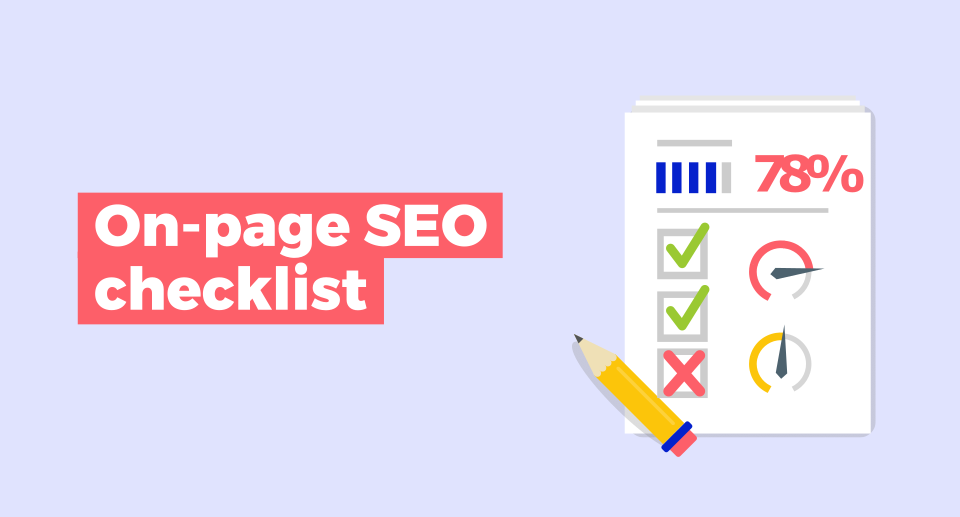
Understanding Off-Page SEO
Off-page SEO refers to all the activities performed outside the boundaries of your website that contribute to its ranking on search engine results pages (SERPs). While on-page SEO focuses on optimizing the content and structure of your website, off-page SEO is about enhancing your site’s authority and relevance through external efforts.
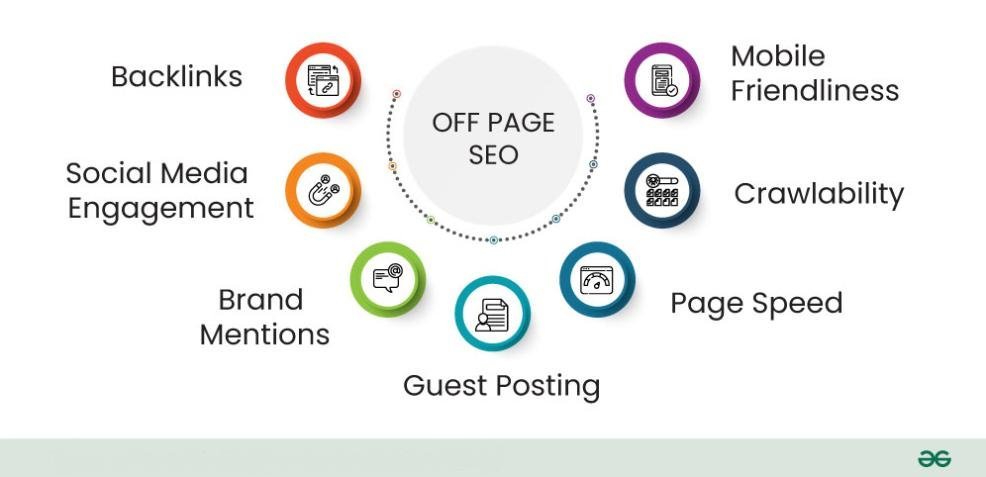
How Off-Page SEO Differs from On-Page SEO
- On-Page SEO:
- Definition: Involves optimizing individual web pages to rank higher and earn more relevant traffic in search engines.
- Key Components: Includes elements like meta tags, keyword usage, content quality, internal linking, URL structure, and mobile-friendliness.
- Goal: To make your website more understandable and accessible to search engines and users.
- Off-Page SEO:
- Definition: Encompasses activities conducted outside your website to influence its visibility and authority.
- Key Components: Involves backlinks, social media engagement, influencer outreach, content marketing, brand mentions, and other promotional activities.
- Goal: To increase your website’s trustworthiness, popularity, and relevance through external validation.
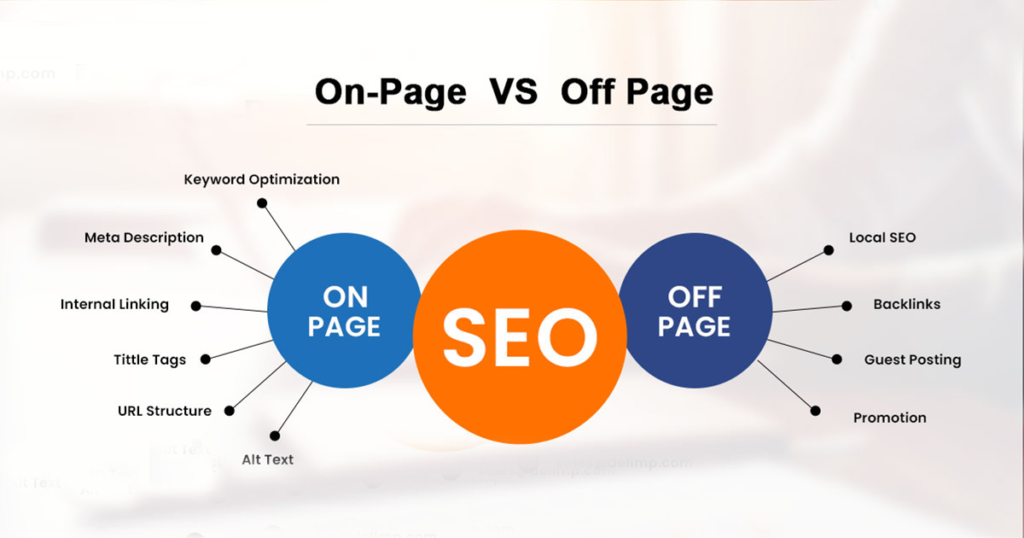
Importance of Off-Page SEO
Off-page SEO is pivotal in boosting your website’s search engine rankings and establishing its authority. While on-page SEO helps search engines understand your website content, off-page SEO signals its relevance, trustworthiness, and popularity. High-quality backlinks, social media engagement, and influencer endorsements are key off-page activities that contribute to these signals.
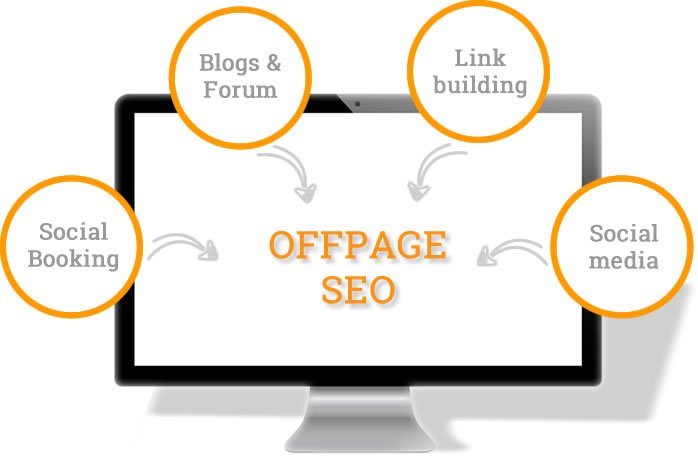
By effectively implementing off-page SEO strategies, you can drive more organic traffic, increase your site’s visibility, and build a strong online presence. Ultimately, off-page SEO helps search engines recognize your site as a valuable resource, leading to higher rankings and improved credibility.
Enhancing Domain Authority
Off-page SEO activities are crucial for enhancing your domain authority and credibility. Domain authority is a measure of your website’s trustworthiness and influence in your industry. By acquiring high-quality backlinks from reputable websites, engaging with your audience on social media, and gaining endorsements from industry influencers, you can improve your domain authority. These activities demonstrate to search engines that your website is a trusted and valuable resource, which can lead to higher rankings and greater online visibility.
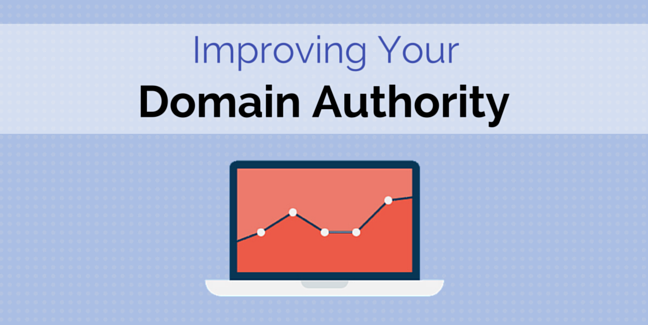
Building Backlinks
Backlinks play a central role in off-page SEO and significantly impact your search engine rankings. A backlink is a link from another website to your own, serving as a vote of confidence in your content. Search engines view high-quality backlinks as endorsements of your site’s authority and relevance.
The more authoritative and relevant the linking site, the more valuable the backlink. Effective strategies for building backlinks include guest blogging, content collaborations, and outreach to industry influencers. By focusing on acquiring high-quality backlinks, you can improve your site’s visibility, attract more organic traffic, and boost your search engine rankings.
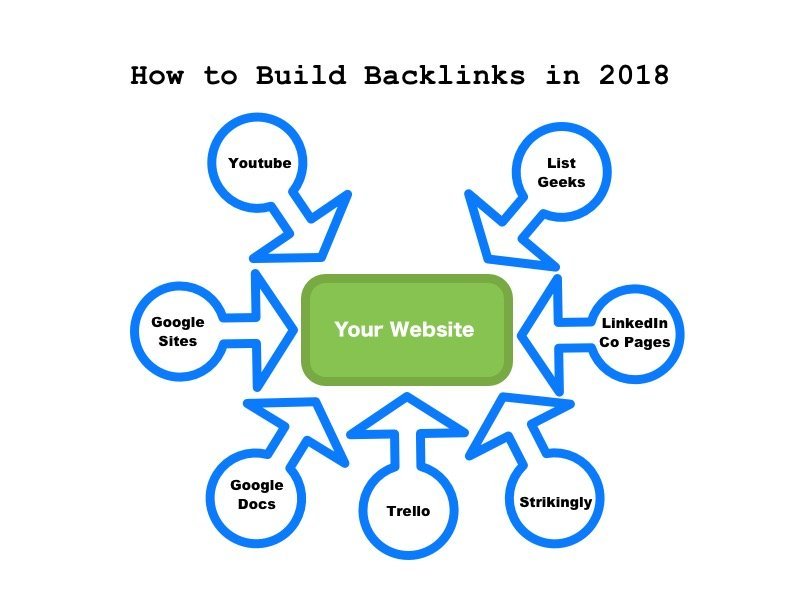
Off-Page SEO Checklist
- ✓ Acquire High-Quality Backlinks: Obtain backlinks from authoritative websites in your industry through guest blogging, content collaborations, and influencer outreach.
- ✓ Social Media Engagement: Engage with your audience on social media to boost your online presence and drive traffic to your site by sharing content and participating in discussions.
- ✓ Influencer Outreach: Collaborate with industry influencers to amplify your content and reach a wider audience through content creation and promotions.
- ✓ Content Marketing: Create valuable, shareable content like articles, infographics, and videos to attract backlinks and social shares.
- ✓ Forum Participation: Engage in niche-specific forums to establish authority and drive traffic by contributing meaningful insights.
- ✓ Local SEO and Citations: Optimize for local search by listing your business on local directories and maintaining consistent NAP information.
- ✓ Press Releases and PR Campaigns: Use press releases to generate media coverage and high-quality backlinks through reputable PR channels.
- ✓ Brand Mentions: Leverage unlinked brand mentions to build brand awareness and authority by monitoring and engaging with mentions online.
- ✓ Guest Blogging: Write guest posts for reputable sites in your industry to drive traffic and build backlinks.
- ✓ Participation in Industry Events: Enhance your brand’s visibility by participating in or sponsoring industry events like conferences and webinars.
- ✓ Podcast Appearances: Gain exposure and backlinks by appearing as a guest on industry-related podcasts.
- ✓ Content Syndication: Syndicate your content on reputable platforms to reach a broader audience and attract backlinks.
- ✓ Influencer and Blogger Reviews: Encourage influencers and bloggers to review your products or services to drive traffic and build backlinks.
- ✓ Video Marketing: Use video content to engage your audience and drive traffic by creating and optimizing valuable videos.
- ✓ Infographics and Visual Content: Create and share infographics and visual content to attract backlinks and social shares.
Quality Backlink Building
Strategies for Building High-Quality Backlinks from Authoritative Sites: Building high-quality backlinks from authoritative sites is a cornerstone of effective off-page SEO. These backlinks act as endorsements, signaling to search engines that your content is valuable and trustworthy. Here are three proven strategies to help you acquire these valuable backlinks:
Guest Posting
- Description: Guest posting involves writing articles for other reputable websites in your industry. This not only helps you acquire quality backlinks but also increases your exposure and credibility.
- How to Achieve: Identify high-authority blogs in your niche, pitch unique and valuable content ideas to them, and ensure that your guest posts include a link back to your site. Focus on creating well-researched and insightful content that aligns with the host site’s audience.

Broken Link Building
- Description: Broken link building involves finding broken links on authoritative websites and suggesting your own content as a replacement. This strategy not only helps you gain valuable backlinks but also assists webmasters in maintaining their site’s quality.
- How to Achieve: Use tools like Ahrefs or Broken Link Checker to find broken links on relevant websites. Reach out to the site owners, inform them of the broken link, and suggest your relevant content as a replacement. Ensure that your content provides equal or greater value than the original link.
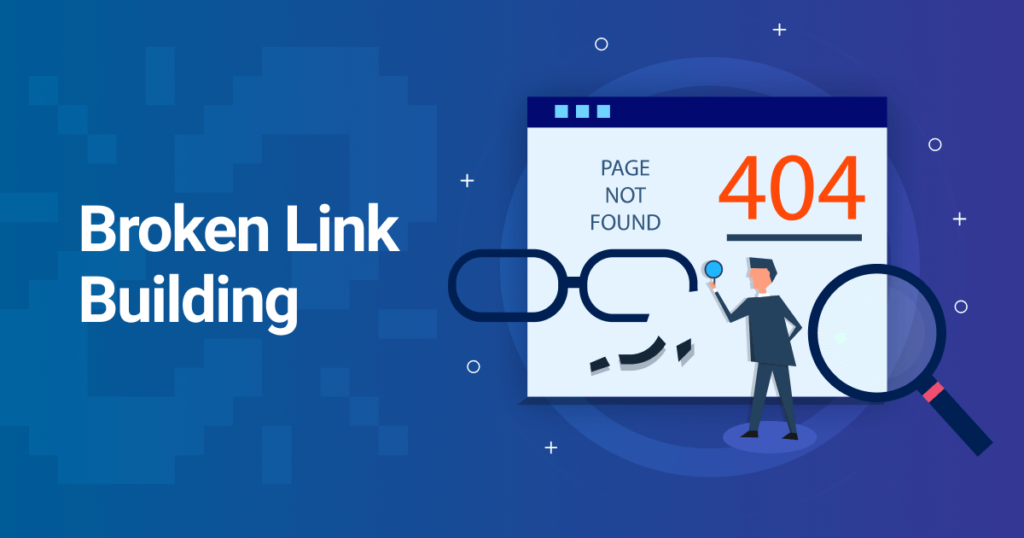
Skyscraper Technique
- Description: The skyscraper technique involves creating superior content that improves upon existing high-performing content. This technique attracts high-quality backlinks as it provides exceptional value to users.
- How to Achieve: Identify popular content in your niche using tools like BuzzSumo. Create a more comprehensive, updated, and engaging version of that content. Promote your content to the right audience and reach out to websites that linked to the original content, suggesting your enhanced version as a valuable resource.

Social Media Engagement
Social media engagement plays a vital role in off-page SEO by increasing your website’s visibility, driving traffic, and building a strong online presence. Social media platforms provide an excellent opportunity to reach a broader audience, promote your content, and foster meaningful interactions with your followers.
Sharing Content on Social Media
Best Practices for Sharing Content on Social Media to Increase Visibility and Engagement
- Choose the Right Platforms: Identify which social media platforms your target audience uses the most. Focus your efforts on those platforms to maximize reach and engagement.
- Craft Compelling Headlines and Descriptions: Use attention-grabbing headlines and concise descriptions that clearly convey the value of your content. This helps to attract more clicks and shares.
- Use Visuals: Incorporate high-quality images, videos, and infographics in your posts. Visual content is more engaging and can significantly increase the likelihood of your content being shared.
- Post Consistently: Maintain a consistent posting schedule to keep your audience engaged and informed. Use social media management tools to schedule your posts and ensure regular updates.
- Leverage Hashtags: Use relevant hashtags to increase the discoverability of your content. Research trending hashtags in your niche and incorporate them into your posts to reach a wider audience.
- Encourage Sharing: Prompt your audience to share your content by including calls to action (CTAs) in your posts. This can help amplify your reach and drive more traffic to your website.

Engaging with Followers
How to Engage with Followers and Build a Strong Social Media Presence
- Respond to Comments and Messages: Take the time to respond to comments and messages from your followers. Engaging in conversations shows that you value their input and helps build a loyal community.
- Ask Questions: Encourage interaction by asking your followers questions related to your content or industry. This can spark discussions and increase engagement on your posts.
- Host Contests and Giveaways: Organize contests and giveaways to create excitement and encourage participation. These activities can significantly boost engagement and attract new followers.
- Share User-Generated Content: Highlight content created by your followers that showcases your products or services. This not only provides social proof but also fosters a sense of community.
- Provide Value: Share informative, entertaining, and valuable content that addresses the needs and interests of your audience. This can help establish your authority and keep your followers engaged.
- Monitor and Analyze Performance: Use social media analytics tools to track the performance of your posts and engagement levels. Analyzing this data can help you understand what resonates with your audience and refine your strategy accordingly.

Influencer Outreach
Influencer outreach is a powerful off-page SEO strategy that can help you boost your website’s visibility, credibility, and authority. By collaborating with influencers in your niche, you can reach a broader audience, gain valuable backlinks, and enhance your online presence. Here’s how to effectively identify relevant influencers and build strong relationships with them.

Identifying Relevant Influencers
How to Identify and Reach Out to Relevant Influencers in Your Niche
- Research Influencers in Your Industry: Use tools like BuzzSumo, Followerwonk, and social media platforms to find influencers who are active in your niche. Look for individuals who have a substantial following, high engagement rates, and produce content that aligns with your brand.
- Evaluate Their Influence: Assess the potential influencers based on their reach, engagement, and the quality of their content. Check their followers’ interaction with their posts, as well as the authenticity of their audience.
- Analyze Their Content: Ensure that the influencer’s content style and values align with your brand. This alignment is crucial for a successful collaboration that feels authentic to their audience.
- Reach Out with a Personalized Message: When contacting influencers, personalize your outreach message. Mention specific aspects of their work that you admire and explain how a collaboration would be mutually beneficial.
- Offer Value: Clearly outline the benefits of collaborating with you, whether it’s through compensation, free products, or access to your audience. Make sure the value proposition is compelling.
Building Relationships
Tips for Building and Maintaining Relationships with Influencers
- Engage with Their Content: Start by genuinely engaging with the influencer’s content. Like, comment, and share their posts to show your appreciation for their work and to get on their radar.
- Provide Value First: Offer something of value before asking for a favor. This could be sharing their content, offering insights, or featuring them on your platforms.
- Be Transparent and Honest: Maintain transparency about your goals and expectations from the collaboration. Honesty builds trust and forms the foundation of a long-lasting relationship.
- Collaborate on Content: Work together on creating high-quality content that benefits both parties. This could include guest posts, social media takeovers, product reviews, or co-hosted events.
- Follow Up and Stay Connected: After the initial collaboration, keep in touch with the influencer. Regularly engage with their content, share updates, and look for new opportunities to collaborate.
- Show Appreciation: Acknowledge and appreciate the influencer’s efforts. Publicly thank them for their collaboration and highlight the positive impact it has had on your brand.
Online Directories and Citations
Submitting your business to online directories and building local citations are crucial for enhancing your local SEO. These efforts help search engines verify your business’s legitimacy and improve your visibility in local search results, making it easier for potential customers to find you.
Selecting Quality Directories
How to Choose Quality Directories for Submissions
- Relevance: Select directories that are relevant to your industry or niche. Industry-specific directories often have higher authority and can drive targeted traffic to your site.
- Authority: Use tools like Moz’s Domain Authority or Ahrefs’ Domain Rating to evaluate the authority of directories. Submitting to high-authority directories can boost your site’s credibility.
- User Experience: Choose directories that are user-friendly and have a good reputation. Avoid directories that are cluttered with ads or have a poor design, as these can negatively impact user perception.
- Local Focus: For local SEO, prioritize directories that focus on local businesses, such as Yelp, Google My Business, and local chamber of commerce websites. These directories are more likely to be frequented by local customers.
- Review Platforms: Consider directories that also serve as review platforms, like TripAdvisor or Trustpilot. Positive reviews on these sites can further enhance your credibility and attract more customers.

Building Local Citations
Steps for Building Local Citations to Enhance Local Search Visibility
- Consistent NAP Information: Ensure that your business name, address, and phone number (NAP) are consistent across all citations. Inconsistent information can confuse search engines and harm your local SEO.
- Create Listings on Major Platforms: Start by creating or claiming your business listings on major platforms like Google My Business, Bing Places, and Apple Maps. These are essential for local search visibility.
- List on Local Directories: Submit your business information to local directories, including city-specific or region-specific websites. Examples include local chamber of commerce sites, local business associations, and local news websites.
- Use Data Aggregators: Submit your business information to data aggregators like Neustar Localeze, Acxiom, and Infogroup. These aggregators distribute your information to a wide network of online directories.
- Encourage Customer Reviews: Ask satisfied customers to leave reviews on your directory listings. Positive reviews can improve your rankings in local search results and attract more potential customers.
- Monitor and Update Listings: Regularly check your directory listings for accuracy and update them as necessary. This includes updating your NAP information if you move locations or change phone numbers.
- Track Your Citations: Use tools like Moz Local or BrightLocal to track your citations and ensure they remain consistent and accurate across the web.

Content Marketing
Content marketing is a powerful strategy for building links and enhancing your off-page SEO. By creating valuable, shareable content, you can attract natural backlinks, increase your website’s visibility, and establish your authority in your niche. Here’s how to effectively create shareable content and utilize visual content to attract backlinks.
Creating Shareable Content
Tips for Creating Content That Is Highly Shareable and Link-Worthy
| Focus on Quality | Ensure your content is well-researched, informative, and provides real value to your audience. High-quality content is more likely to be shared and linked to by others. |
| Understand Your Audience | Create content that resonates with your target audience. Use tools like Google Analytics and social media insights to understand their interests and preferences. |
| Craft Engaging Headlines | Use compelling headlines that grab attention and encourage clicks. Headlines should be clear, concise, and promise a benefit or solution. |
| Incorporate Original Research | Conduct and share original research, surveys, or case studies. Unique data and insights are highly valuable and more likely to attract backlinks. |
| Create List Posts and How-To Guides | List posts and step-by-step guides are popular content formats that are easy to read and share. These types of content often generate more engagement and backlinks. |
| Encourage User Interaction | Include questions, polls, and CTAs (calls to action) in your content to encourage reader interaction and sharing. Interactive content can increase engagement and virality. |
| Update and Repurpose Content | Regularly update your existing content to keep it fresh and relevant. Repurpose content into different formats, such as turning a blog post into a video or infographic, to reach a broader audience. |

Utilizing Visual Content
How to Use Infographics, Videos, and Other Visual Content to Attract Backlinks
| Create Infographics | Infographics are highly shareable and can quickly convey complex information in an easy-to-understand format. Design eye-catching infographics that summarize key points from your content. |
| Produce High-Quality Videos | Videos are engaging and can be shared across multiple platforms. Create tutorials, explainer videos, or product demos that provide value to your audience. |
| Use Images and Slideshows | Enhance your content with relevant images and slideshows. Visual content breaks up text and makes your content more appealing and shareable. |
| Leverage Data Visualizations | Use charts, graphs, and other data visualizations to present statistics and trends. Visual representations of data are more engaging and easier to share. |
| Embed Share Buttons | Make it easy for readers to share your visual content by embedding social media share buttons. This increases the likelihood of your content being shared across various platforms. |
| Submit to Visual Content Platforms | Share your infographics and videos on platforms like Pinterest, Instagram, and YouTube. These platforms can drive significant traffic and backlinks to your site. |
| Collaborate with Visual Content Creators | Partner with graphic designers, videographers, and other visual content creators to produce high-quality visuals. Collaborative efforts can enhance your content’s appeal and shareability. |
Forum and Community Participation
Engaging in forums and online communities is an effective off-page SEO strategy that helps you build authority, connect with your audience, and gain valuable backlinks. By actively participating in discussions and providing valuable insights, you can establish yourself as an expert in your niche and drive traffic to your website.

Identifying Relevant Forums
How to Find and Participate in Forums Relevant to Your Niche
Research Popular Forums: Use search engines to find popular forums related to your industry or niche. Keywords like “[your niche] + forum” or “[your niche] + community” can help you discover relevant platforms.
Utilize Social Media: Platforms like Facebook, Reddit, and LinkedIn have groups and communities dedicated to specific topics. Join these groups to connect with like-minded individuals and participate in discussions.
Check Competitors’ Activity: Analyze where your competitors are active. If they are engaging in specific forums, those platforms are likely valuable for your niche as well.
Use Forum Directories: Websites like Boardreader and FindAForum can help you locate forums based on your interests and industry.
Evaluate Forum Quality: Ensure that the forums you join are active, have a significant number of participants, and maintain a high standard of discussion. Avoid forums that are spammy or have low engagement.
Engaging Authentically
Best Practices for Engaging Authentically and Providing Value in Forum Discussions
- Complete Your Profile: Create a complete and professional profile with a bio, profile picture, and relevant links. A well-rounded profile establishes your credibility from the start.
- Introduce Yourself: When joining a new forum, introduce yourself to the community. Share a brief background about who you are and what you do to build initial connections.
- Listen Before Speaking: Spend time observing the discussions before jumping in. Understand the forum’s culture, tone, and key topics to ensure your contributions are relevant and respectful.
- Provide Value: Focus on providing valuable insights, answers, and resources in your posts. Your primary goal should be to help others, not to promote your website.
- Avoid Spammy Behavior: Do not spam forums with links to your website. Only include links when they are genuinely helpful and relevant to the discussion. Excessive self-promotion can lead to being banned from the forum.
- Be Respectful and Professional: Always communicate respectfully and professionally. Avoid engaging in arguments or negative behavior that can tarnish your reputation.
- Be Consistent: Regular participation is key to building authority. Make it a habit to check in and contribute to discussions regularly.
- Network with Members: Build relationships with other forum members by engaging in private messages and collaborating on projects or discussions.
- Share Your Expertise: Offer your expertise on relevant topics, and don’t be afraid to showcase your knowledge. Thoughtful, knowledgeable contributions can lead to others seeking your advice and visiting your website.
- Monitor Your Engagement: Keep track of the forums you participate in and evaluate the impact on your website traffic and SEO. Adjust your strategy based on what works best.
When it comes to boosting your off-page SEO, one essential strategy is engaging with your followers. For more specific tips tailored to online stores, check out how to enhance your off-page strategies for eCommerce.
Blog Commenting
Blog commenting is a useful off-page SEO strategy that helps you build relationships with other bloggers, engage with your audience, and gain nofollow backlinks. While nofollow backlinks may not directly impact your search engine rankings, they contribute to your overall online presence and drive traffic to your site. Here’s how to effectively comment on relevant blogs and add value through your comments.

Commenting on Relevant Blogs
Tips for Finding and Commenting on Relevant Blogs in Your Industry
- Identify Influential Blogs: Use tools like BuzzSumo, Ahrefs, or Google Alerts to find influential blogs in your industry. Look for blogs that have high engagement and are frequented by your target audience.
- Follow Industry Leaders: Keep track of blogs run by industry leaders and influencers. These blogs often have a large following and active comment sections.
- Participate in Blog Communities: Join blog networks and communities related to your niche. Websites like BlogLovin’ and Feedly can help you discover and follow relevant blogs.
- Monitor Competitors: Check where your competitors are commenting. Engaging on the same blogs can help you reach a similar audience and build your presence.
- Subscribe to Blog Updates: Subscribe to blogs’ newsletters or RSS feeds to stay updated with their latest posts. This allows you to comment promptly and be part of the initial discussion.
Adding Value through Comments
How to Add Value through Thoughtful and Insightful Comments
| Read the Entire Post | Before commenting, read the entire blog post to understand the author’s points fully. This ensures that your comment is relevant and adds value to the discussion. |
| Be Genuine and Authentic | Share your genuine thoughts and experiences related to the post. Authentic comments are more likely to engage the author and other readers. |
| Provide Additional Insights | Offer additional insights or perspectives that complement the blog post. Share useful information, resources, or personal experiences that enhance the conversation. |
| Ask Thought-Provoking Questions | Engage the author and other readers by asking thoughtful questions. This encourages further discussion and demonstrates your interest in the topic. |
| Keep it Professional and Respectful | Maintain a professional tone and be respectful of different viewpoints. Avoid negative or confrontational comments that can harm your reputation. |
| Include a Relevant Link | If appropriate, include a link to your own content that adds value to the discussion. Ensure that the link is relevant and not overly promotional. |
| Be Consistent | Regularly comment on blogs to build relationships and establish your presence. Consistent engagement can lead to more visibility and recognition in your industry. |
| Engage with Other Commenters | Reply to comments from other readers to build connections and foster community engagement. Meaningful interactions can increase your visibility and credibility. |
| Follow Up | If the blog author or other commenters respond to your comment, follow up with further discussion. This ongoing engagement can strengthen relationships and showcase your expertise. |
| Track Your Comments | Keep a record of where you’ve commented and monitor the impact on your traffic and relationships. Adjust your strategy based on the effectiveness of your efforts. |
Brand Mentions
Brand mentions are references to your business, products, or services on external websites. Monitoring and leveraging these mentions can significantly enhance your SEO efforts by increasing your online visibility and authority. Here’s how to identify unlinked mentions and encourage positive mentions of your brand.

Identifying Unlinked Mentions
How to Find and Request Backlinks for Unlinked Brand Mentions
- Use Monitoring Tools: Employ tools like Google Alerts, Mention, or Ahrefs Alerts to track mentions of your brand across the web. These tools notify you whenever your brand is mentioned, allowing you to quickly identify unlinked mentions.
- Search Manually: Periodically perform manual searches using your brand name and relevant keywords. This can help you find mentions that automated tools might have missed.
- Check Social Media: Monitor social media platforms for mentions of your brand. Tools like Hootsuite and Sprout Social can help you track and manage these mentions effectively.
- Analyze Competitor Mentions: Look at where your competitors are mentioned and check if similar opportunities exist for your brand. This can help you identify new platforms and audiences.
- Reach Out for Backlinks: When you find unlinked mentions, contact the website owner or author. Politely request that they add a link to your website, explaining how it would benefit their readers by providing a direct resource.
Example Email Template for Requesting a Backlink:
Hi [Name], I recently came across your article [Article Title] on [Website Name] and noticed that you mentioned [Your Brand]. Thank you for the mention! I believe that adding a link to our website [Your Website URL] would provide your readers with more detailed information on [Topic Related to Mention]. If possible, could you please update the mention with a link to our site? Thank you for your consideration! Best regards, [Your Name] [Your Position] [Your Contact Information]Encouraging Positive Mentions
Strategies for Encouraging Positive Mentions of Your Brand
- Deliver Exceptional Customer Service: Providing outstanding customer service encourages satisfied customers to mention your brand positively online. Happy customers are more likely to share their experiences on social media, review sites, and blogs.
- Create Shareable Content: Produce high-quality, shareable content that others will want to mention and link to. This can include blog posts, infographics, videos, and case studies that provide valuable insights or solutions.
- Engage with Your Audience: Actively engage with your audience on social media and other platforms. Respond to comments, answer questions, and participate in discussions to build a positive reputation and encourage mentions.
- Partner with Influencers: Collaborate with influencers in your industry who can reach a larger audience and generate positive mentions. Influencers can review your products, share your content, and highlight your brand in their posts.
- Run Promotions and Contests: Organize promotions, contests, and giveaways that encourage participants to mention your brand. Create unique hashtags and encourage participants to share their experiences online.
- Offer Incentives for Reviews: Encourage customers to leave reviews by offering incentives such as discounts, free samples, or entry into a giveaway. Positive reviews on platforms like Google, Yelp, and industry-specific review sites can significantly boost your online reputation.
- Create a Press Kit: Develop a press kit with information about your brand, products, and services. Make it easy for journalists and bloggers to write about your brand by providing high-quality images, logos, and key information.
- Showcase User-Generated Content: Highlight user-generated content on your website and social media channels. Featuring your customers’ content not only shows appreciation but also encourages others to share their experiences.

Podcast Guest Appearances
Being a guest on podcasts is an effective off-page SEO strategy that can help you increase your exposure, build authority, and gain valuable backlinks. Podcasts have become a popular medium for sharing information and engaging with audiences, making them an excellent platform for promoting your brand.
Finding Relevant Podcasts
How to Identify and Reach Out to Relevant Podcasts in Your Niche
- Research Popular Podcasts: Use podcast directories like Apple Podcasts, Spotify, and Stitcher to find popular podcasts in your industry. Look for shows that cover topics related to your expertise and have a significant following.
- Use Podcast Networks: Join podcast networks and communities such as Podchaser and Listen Notes. These platforms can help you discover podcasts that are actively seeking guests in your niche.
- Monitor Competitors: Pay attention to the podcasts your competitors are appearing on. If a podcast has featured someone in your field, it’s likely relevant to your niche and may be open to having you as a guest.
- Check Social Media: Follow industry leaders and influencers on social media. They often share the podcasts they appear on, providing you with potential opportunities.
- Create a Pitch List: Compile a list of potential podcasts and gather contact information for the hosts or producers. Personalize your outreach emails to each podcast to increase your chances of being invited.
Example Email Template for Podcast Outreach:
Hi [Podcast Host’s Name], I’m [Your Name], [Your Position] at [Your Company]. I’ve been following your podcast, [Podcast Name], and I particularly enjoyed your recent episode on [Relevant Topic]. I would love the opportunity to be a guest on your show and share insights on [Your Expertise]. I believe your audience would find value in learning about [Specific Topic or Unique Perspective]. Please let me know if you’re interested, and I’d be happy to discuss this further. Thank you for considering my request! Best regards, [Your Name] [Your Contact Information]Preparing for Podcast Appearances
Tips for Preparing and Making the Most of Your Podcast Guest Appearances
- Research the Podcast: Listen to several episodes of the podcast to understand its format, style, and audience. Familiarize yourself with the host’s interview style and the types of questions typically asked.
- Prepare Key Points: Outline the key points you want to discuss during the interview. Focus on providing valuable insights and actionable advice that will benefit the podcast’s audience.
- Practice Your Delivery: Rehearse your talking points and practice speaking clearly and confidently. Consider doing a mock interview with a colleague to get comfortable with the format.
- Promote Your Appearance: Once your guest appearance is confirmed, promote it on your social media channels, website, and email newsletters. Encourage your audience to tune in and share the episode.
- Bring Value: During the interview, focus on delivering value to the listeners. Share your expertise, provide practical tips, and tell engaging stories that illustrate your points.
- Mention Your Website: Subtly mention your website or specific pages where listeners can find more information. Ensure that the podcast episode’s show notes include a link to your website.
- Engage with the Audience: After the podcast is published, engage with the audience by responding to comments and sharing additional resources. This helps build a connection with new listeners and drives traffic to your site.
- Follow Up with the Host: After the interview, thank the host for having you on the show. Offer to share the episode with your audience and express interest in future collaborations.
Tools and Resources for Off-Page SEO
Using the right tools and resources can streamline your off-page SEO efforts and improve your effectiveness in building backlinks, engaging with your audience, and tracking your performance. Here are some recommended tools and resources to help you with various off-page SEO activities:

Backlink Analysis Tools
Overview of Popular Backlink Analysis Tools and Their Features
| Tool | Features | Benefits |
|---|---|---|
| Ahrefs | Comprehensive backlink analysis, site explorer, keyword research, content explorer, and rank tracking. | Provides detailed insights into your backlink profile, identifies high-quality link opportunities, and helps you track your progress against competitors. Offers robust content and keyword research tools. |
| Moz Link Explorer | Link analysis, domain authority (DA) scoring, spam score, and backlink tracking. | Helps you understand your link profile’s health and quality. The DA and spam score metrics are useful for evaluating the strength and potential risks associated with your backlinks. |
| SEMrush | Backlink auditing, competitive analysis, link building tools, and comprehensive SEO suite. | Identifies valuable link-building opportunities and understands your competitors’ link strategies. Provides a holistic view of your SEO performance. |
| Majestic | Trust Flow, Citation Flow, backlink history, and topical relevance. | Offers unique metrics like Trust Flow and Citation Flow to assess the quality and influence of backlinks. Provides historical backlink data and categorizes links based on topical relevance. |
Social Media Management Tools
Explanation of Social Media Management Tools to Enhance Engagement and Track Performance
| Tool | Features | Benefits |
|---|---|---|
| Hootsuite | Social media scheduling, monitoring, analytics, and team collaboration. | Manages multiple social media accounts from a single dashboard, schedules posts in advance, monitors brand mentions, and analyzes performance metrics. Team collaboration features are useful for larger organizations. |
| Buffer | Post scheduling, social media analytics, content calendar, and engagement tools. | Helps plan and schedule social media posts, analyze engagement metrics, and optimize posting schedule. Its simple interface makes it easy to manage your social media strategy. |
| Sprout Social | Social media scheduling, engagement, analytics, CRM integration, and social listening. | Offers comprehensive tools for managing social media interactions, tracking performance, and gaining insights into your audience. CRM integration helps maintain customer relationships through social channels. |
| Later | Visual content calendar, Instagram scheduling, hashtag suggestions, and analytics. | Particularly useful for visual platforms like Instagram. Offers a visual content calendar, drag-and-drop scheduling, and tools to optimize posts for higher engagement. |
Content Marketing Tools
Tools for Optimizing Content Marketing Efforts and Measuring Impact
| Tool | Features | Benefits |
|---|---|---|
| BuzzSumo | Content discovery, social engagement metrics, influencer identification, and content research. | Helps find trending content, analyze social engagement, and identify key influencers in your industry. Invaluable for creating content that resonates with your audience. |
| Canva | Graphic design templates, drag-and-drop editor, collaboration tools, and a library of visual assets. | Allows creating professional-quality graphics, infographics, social media posts, and other visual content with ease. Templates and design tools are user-friendly, making it accessible for non-designers. |
| Grammarly | Grammar and spelling checker, style suggestions, plagiarism detection, and writing enhancement. | Ensures that content is clear, error-free, and engaging. Provides real-time feedback and suggestions to improve the quality and readability of your writing. |
| HubSpot Content Strategy Tool | Topic research, SEO recommendations, content planning, and performance tracking. | Helps plan and execute content marketing strategy. Provides insights into popular topics, SEO recommendations, and tools to measure the effectiveness of your content. |
| CoSchedule Headline Analyzer | Headline analysis, readability score, SEO optimization, and suggestions for improvement. | Helps craft compelling headlines that drive clicks and engagement. Scores headlines based on readability, SEO value, and emotional impact. |
Influencer Outreach
| Tool | Description |
|---|---|
| Followerwonk | A tool for finding and analyzing Twitter influencers. It helps you identify potential collaborators and analyze their follower base. |
| Traackr | A comprehensive influencer marketing platform that helps you discover influencers, manage relationships, and measure the impact of your influencer campaigns. |
| BuzzStream | An outreach and relationship management tool that streamlines your influencer outreach efforts. It helps you manage communication and track outreach progress. |
Forum and Community Participation
| Tool | Description |
|---|---|
| Boardreader | A search engine for forums and community discussions. It helps you find relevant forums and communities to engage with. |
| FindAForum | A directory of forums categorized by niche. It helps you discover active forums in your industry for participation. |
| Disqus | A blog comment hosting service that helps you manage comments on your site and engage with commenters on other blogs. |
Brand Mention Monitoring
| Tool | Description |
|---|---|
| Google Alerts | A free tool for monitoring brand mentions and keywords across the web. It sends you notifications whenever your brand is mentioned. |
| Mention | A real-time media monitoring tool that tracks brand mentions across social media, blogs, forums, and other platforms. |
| Ahrefs Alerts | A feature within Ahrefs that notifies you of new mentions of your brand or keywords. It helps you stay on top of unlinked mentions and backlink opportunities. |
Local SEO and Citations
| Tool | Description |
|---|---|
| Moz Local | A tool for managing and tracking your local business listings across multiple directories. It ensures your NAP information is consistent and accurate. |
| Yext | Another tool for managing local listings and citations. It helps you control your business information across various platforms. |
| BrightLocal | Provides local SEO tools for tracking local search performance, managing citations, and monitoring reviews. |
Podcast Guest Appearances
| Tool | Description |
|---|---|
| Podchaser | A podcast directory that helps you discover and research podcasts in your niche. It provides information on podcast ratings, reviews, and contact details. |
| Listen Notes | Another podcast search engine that helps you find relevant podcasts for guest appearances. It offers detailed podcast information and contact options. |
| PodcastGuests.com | A service that connects podcast hosts with potential guests. It helps you find guest opportunities and get featured on relevant podcasts. |
Conclusion
Off-page SEO is essential for building your website’s authority, increasing its visibility, and driving organic traffic. While on-page SEO ensures that your website is optimized for search engines, off-page SEO involves activities outside your website that signal its value and relevance. By implementing a comprehensive off-page SEO strategy, you can improve your search engine rankings, enhance your online presence, and establish your brand as an industry leader.
Recap of Key Points
Key Points Discussed:
- Understanding Off-Page SEO: Differentiating between on-page and off-page SEO and recognizing the importance of external activities.
- Importance of Off-Page SEO: Enhancing domain authority, building high-quality backlinks, and improving search engine rankings.
- Quality Backlink Building: Strategies for acquiring high-quality backlinks through guest posting, broken link building, and the skyscraper technique.
- Social Media Engagement: Leveraging social media platforms to increase visibility, drive traffic, and engage with your audience.
- Influencer Outreach: Collaborating with influencers to boost SEO and gain authoritative backlinks.
- Online Directories and Citations: Submitting to online directories and building local citations for improved local SEO.
- Content Marketing: Creating shareable and visual content to attract backlinks and improve off-page SEO.
- Forum and Community Participation: Engaging in forums and online communities to build authority and gain backlinks.
- Blog Commenting: Using blog commenting to build relationships and gain nofollow backlinks.
- Brand Mentions: Monitoring and leveraging brand mentions for SEO benefits.
- Podcast Guest Appearances: Appearing on podcasts to increase exposure and build backlinks.
- Tools and Resources: Utilizing tools and resources for backlink analysis, social media management, and content marketing.
Next Steps for Off-Page SEO Improvement
Actionable Steps:
- Audit Your Backlink Profile: Use tools like Ahrefs, Moz, or SEMrush to analyze your current backlink profile. Identify opportunities for acquiring new high-quality backlinks.
- Engage on Social Media: Increase your activity on social media platforms. Share valuable content, engage with your audience, and participate in relevant discussions.
- Outreach to Influencers: Identify key influencers in your niche and build relationships. Collaborate on content and promotional activities to leverage their audience.
- Submit to Directories and Build Citations: Ensure your business is listed on reputable online directories and local citation sites. Maintain consistent NAP information across all platforms.
- Create High-Quality Content: Focus on creating valuable, shareable content that attracts natural backlinks. Use visual content like infographics and videos to enhance engagement.
- Participate in Forums and Communities: Join relevant forums and online communities. Provide valuable insights and establish your authority in your niche.
- Comment on Relevant Blogs: Find and comment on blogs in your industry. Add value through thoughtful and insightful comments that encourage further discussion.
- Monitor Brand Mentions: Use tools to monitor mentions of your brand. Reach out to authors of unlinked mentions and request backlinks.
- Appear on Podcasts: Identify and reach out to relevant podcasts in your niche. Prepare thoroughly for appearances to provide maximum value to listeners.
- Utilize SEO Tools: Leverage SEO tools for backlink analysis, social media management, and content marketing. These tools can help streamline your efforts and track your progress.
By following this off-page SEO checklist, you can systematically improve your website’s authority, visibility, and search engine rankings. Consistent and strategic implementation of these activities will lead to long-term success in your SEO efforts.













